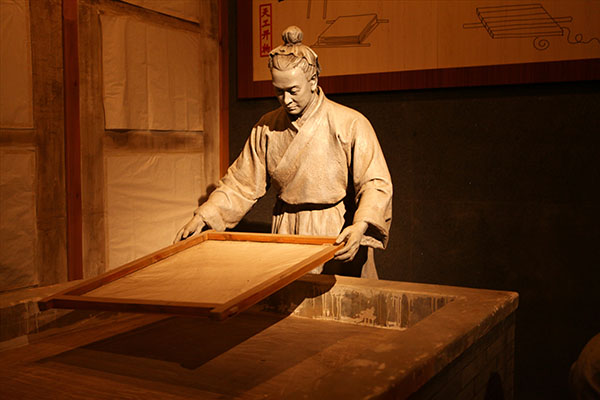Paper is a ubiquitous material in our daily lives, but few people know the origins of this versatile material. Papermaking technology was invented in ancient China, and the country has a rich history of using paper in various aspects of its society. In this article, we will explore the history, significance, and types of paper used in ancient China.
History of Papermaking in Ancient China
The invention of paper is attributed to Cai Lun, a eunuch in the Han court during the 2nd century CE. He developed a method of making paper by pulping mulberry bark, hemp, and other plant fibers, and pressing the mixture into sheets. Early paper was expensive and reserved for the elite, but over time, the technology spread throughout China, and paper became more affordable and widely available.
During the Tang dynasty (618-907 CE), papermaking technology improved, and paper mills were established throughout the country. Paper production expanded from using mulberry bark and hemp to include rice straw, bamboo, and other plant fibers. The Tang period also saw the development of woodblock printing, which relied on paper as a printing medium. This innovation paved the way for the mass production of books and other printed materials.
Significance of Paper in Ancient China
Paper had a significant impact on the development of Chinese society. Its versatility allowed it to be used in various aspects of daily life, from writing and painting to packaging and money. The following are some of the ways paper was used in ancient China:
Uses of Paper in Daily Life
One of the most common uses of paper in ancient China was for writing. The availability of paper made it possible for people to keep records, write letters, and communicate more easily. Before paper, writing was done on bamboo or silk, which were more expensive and time-consuming to produce.
In addition to writing, paper was also used for artwork. Chinese artists used paper to create paintings, calligraphy, and other forms of art. The texture and absorbency of paper made it an ideal medium for painting and calligraphy.
Role of Paper in Bureaucracy and Governance
The use of paper also had significant implications for governance and bureaucracy in ancient China. The establishment of a paper-based bureaucracy enabled the Chinese government to maintain records, issue edicts, and communicate more efficiently. The development of paper currency also made it easier to conduct trade and pay taxes.
Paper as a Medium for Art and Literature
The Tang dynasty was a golden age for literature and the arts in China, and paper played a crucial role in this flourishing cultural scene. The invention of woodblock printing made it possible to produce books in large quantities, leading to the spread of literacy and the dissemination of knowledge. Famous works of literature, such as “The Dream of the Red Chamber” and “Journey to the West,” were printed on paper and became accessible to a wider audience.
Types of Paper Used in Ancient China
Paper in ancient China was not a uniform material, and different types of paper were used for different purposes. The following are some of the varieties of paper that were commonly used:
Varieties of Paper Based on Materials and Manufacturing Techniques
- Xuan Paper: Made from bamboo and mulberry bark, xuan paper is a high-quality paper that is still used for painting and calligraphy today.
- Tianshui Paper: Made from rice straw, tianshui paper was a cheap and abundant paper used for daily writing and printing.
- Shu Paper: Made from bark of sandalwood trees, shu paper was used for calligraphy and printing.
Differences Between Imperial and Commoner Paper
In ancient China, there was a distinction between paper used by the imperial court and that used by the common people Imperial paper was of higher quality, made from rare and expensive materials, and had specific designs or patterns on it to distinguish it from commoner paper. Commoner paper, on the other hand, was made from more readily available materials and had a plain appearance.
Conclusion
The invention of papermaking in ancient China had a profound impact on the development of Chinese society. Paper became a vital material for daily life, governance, and cultural expression. The availability of paper made it easier for people to communicate, record information, and produce works of art and literature. Different types of paper were used for different purposes, and the quality and appearance of paper varied depending on the intended audience.
Today, paper is a ubiquitous material that we often take for granted. However, its origins in ancient China remind us of the rich history and cultural contributions of this country. The legacy of Chinese papermaking can be seen in the continued use of traditional materials and techniques in modern paper production, as well as in the appreciation of Chinese calligraphy and painting around the world.




